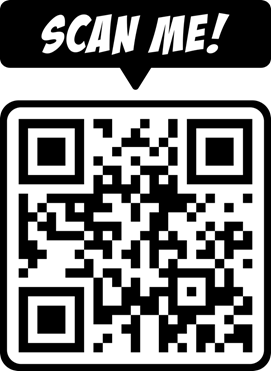Pavilion Publishing and Media Ltd
Blue Sky Offices Shoreham, 25 Cecil Pashley Way, Shoreham-by-Sea, West Sussex, BN43 5FF, UNITED KINGDOM
A QR (stands for quick response) code put simply, is a sophisticated form of a bar code that can store more information compared to a standard bar code. It is a pattern usually made up of a sequence of black and white squares which can be read by a machine, often a smartphone enabled with a suitably equipped camera. A QR code can direct the user to a website, an app or simply a restaurant menu and makes an interaction between the user and the target, painless and simple.
Of course we need something to read the QR code and the widespread use of smartphone ownership has facilitated this. In the past, we needed an app but most modern smartphones can read the distinctive QR codes directly via the camera app without the need for any third party involvement or even having press the shutter button. For iPhone users go to settings, then camera and make sure the Scan QR Codes is switched to enabled.
The history of this application is interesting as it has been around for a lot longer than you might think. It came about in the mid 1990s when a Japanese car components company was struggling with the logistics of moving significant amounts of inventory. In an attempt to solve this problem, a company employee came up with the QR code concept.
QR codes during the Covid-19 pandemic
Not only did the rise and general use of smartphones boost the use of QR codes but the huge, disruptive and tragic impact of the Covid-19 pandemic also enhanced their use. Suddenly the use of QR codes seemed to mushroom as all most users need to do is point their smartphone’s camera and activate the camera app (usually there is no need to touch the shutter button) and the result is generated on a smartphone screen.
No significant technical ability is needed and hence its popularity with both users and providers. Crucially during the Covid-19 pandemic, the user did not need to use and touch paper such as restaurant menus; a QR code could generate the menu on a smartphone screen. Of course, these actions usually do depend on having a decent internet connection.
Even better, it is incredibly easy to create a QR code for yourself and for your own personal use. There are plenty of resources that can facilitate this such as QR Tiger and Fast QR Code. Even better, they offer a free and easy to use service. Simply follow the instructions on the website and within a minute or so, you have generated a QR code to store or use on your computer or smartphone.
With the first website, you follow the instructions, and you are taken to the pricing screen but click the free option and insert your e mail and the QR code is e mailed to you to save on the computer. Fast QR Code follows a similar pick and click option and the QR code is generated on screen for you to download.
The QR code below I produced from Fast QR Code and it took me about me about a minute to construct. It should take you to the BBC News website by simply pointing your camera app or QR code reader at the QR code. Simple to create and simple to generate a result. Another source of generating a free QR code is QR Stuff and this quite rightly tells the user to check that their QR code works and carries out the correct operation before you distribute it.

Their uses are endless and a good example as mentioned previously, is having a QR code at a restaurant table or shop entrance to have the eat in or take away menu instantly appear on your phone. Apart from saving on printing costs, the menus can be quickly updated and in these covid-19 times no one needs to touch paper.
Another less obvious but interesting example was highlighted in a recent article in The Economist. In Asia, it is traditional to swap printed business cards but in the current Covid-19 pandemic this is not easily possible or advisable. So QR codes for the business card can appear as a background in a video communication app. QR codes can also appear in adverts and product information. No doubt, innovative uses of QR codes will continue to appear and I am sure will become more embedded in our everyday activities.
You probably don’t realise it, but it is possible that your web browser can easily generate a QR code for the page you are looking at. The QR code can be downloaded and sent to anyone you want. In Google Chrome it is easy, on the web page you want, just right click with the mouse on the page and in the context sensitive menu, click “create QR Code for this page.” In Microsoft Edge, the ability to do this needs to be switched on and follow the relatively easy instructions.
Finally, just remember that QR codes can point you in the direction of an activity that could generate an unwanted action which could be malicious to you or your device. So not all QR codes are safe and always use a QR code from a source that you know you can trust. Bear in mind that QR codes can maliciously direct you to a rogue website. So always assess where a QR code takes you to.


